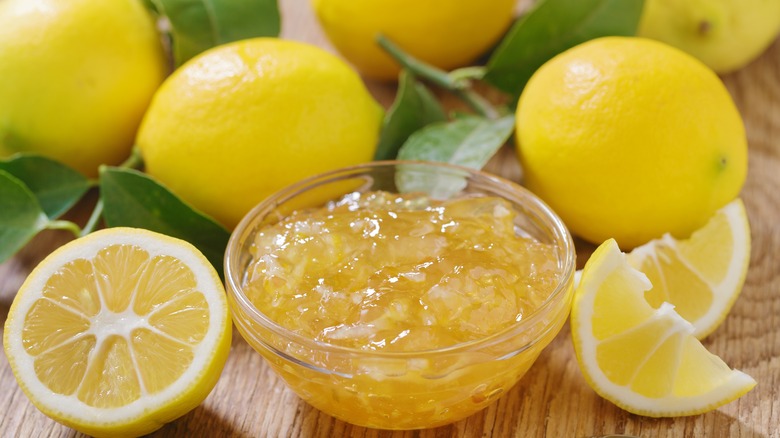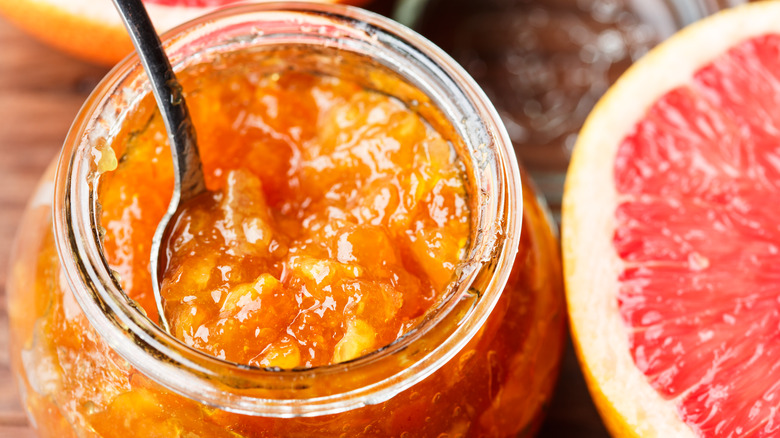Why You Should Look Beyond Oranges For Your Next Marmalade
Unlike jams and jellies that are made from any type of fruit, marmalade is always made from citrus. If we played a game of word association, and I offered up "marmalade," chances are you'd respond with "orange." But while the best-known version of marmalade is, indeed, the traditional one made from bitter Seville oranges, this fruit preserve is also delicious when made from lemons, limes, or grapefruit. Any citrus fruit, in fact — used on its own or in colorful combinations — can be used to make a marmalade that offers fresh flavor possibilities beyond the standard orange. For example, a marmalade made with fresh limes, lemon juice, and sugar, goes well with spicy foods. And a three-citrus compote of lemon, orange, and grapefruit makes a tart and tangy glaze for roasted chicken.
Marmalade's citrusy tartness is a key part of its flavor profile, balanced by the sweetness from the sugar. What really sets marmalade apart from its fruit preserve cousins, however, is that it's made with citrus pulp, rind, and pith. The citrus oils in the strips of rind add the characteristic bitter notes to the flavor — which can be accentuated by slicing the peel in thicker pieces — and the white pith is naturally rich in pectin, which thickens the marmalade and gives it a pleasing consistency.
For added layers of flavor, you can also enhance a marmalade recipe by adding freshly grated ginger, lavender, or rose water, or spices such as cinnamon, cloves, cardamom, or turmeric.
Marmalade is not just for toast
Marmalade is frequently perceived as just a fruit spread for toast or English muffins. But its potential goes way beyond breakfast, especially if you think of marmalade as what it is: A base mixture of tart, sweet, and bitter. It's actually very versatile and can substitute for an ingredient, serve as the base for a sauce, or top off a dish in an unexpected way.
For example, whisk a spoonful of marmalade with olive oil and vinegar to make a tart and fruity salad dressing. Blend marmalade with soy sauce to make a marinade, or try it as a glaze for ham, pork, or poultry. A fast and easy dipping sauce for coconut shrimp can be made by thinning out marmalade with fruit juice (orange juice for orange marmalade, for example), heating it until warm in a saucepan, then stirring in prepared horseradish to taste.
Serve any citrus marmalade over ice cream for dessert, or add it to muffin batter before baking. Cocktails also get a flavor boost by adding a spoonful of marmalade to the shaker when making fruity or sour drinks. And speaking of cocktails, whiskey or brandy are among the many ingredients that can be added to marmalade to elevate its flavor. Using liqueurs in your marmalade mix is even better: Orange-flavored Grand Marnier or Cointreau, made with bitter orange peels and citrusy bergamot fruit, are a natural fit for Seville marmalade, but you could also try them with grapefruit marmalade.

